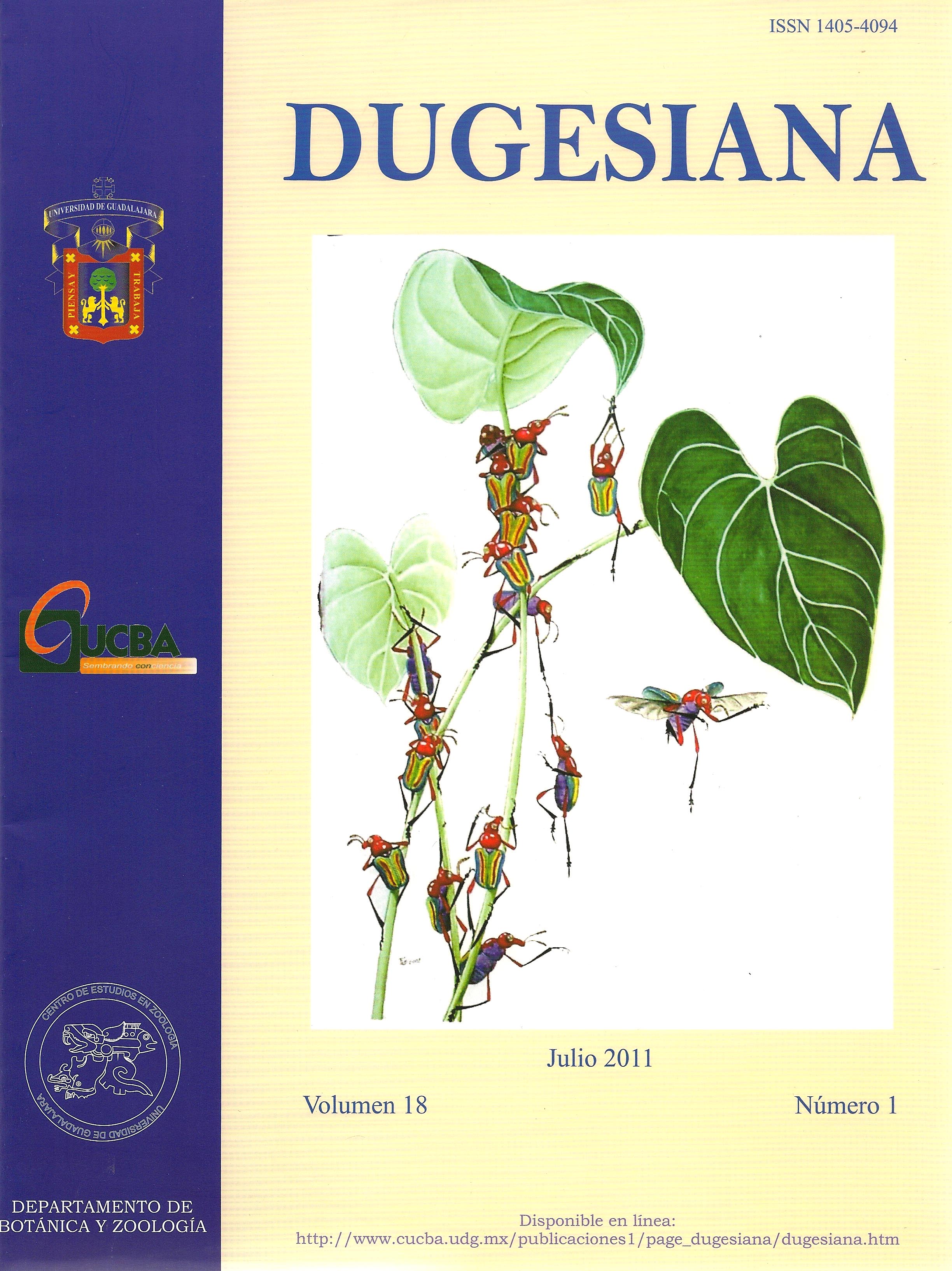HYMENOPTERA: Lista de especies de hormigas (Hymenoptera: Formicidae) para México
DOI:
https://doi.org/10.32870/dugesiana.v18i1.3995Keywords:
Formicidae, México, Diversidad, Distribución. AAbstract
Se presenta una lista de las especies de hormigas para México, con base en revisión de literatura. Para cada especie se menciona el estado del país en el que se registra y la fuente de donde proviene la información. Se tiene un total de 884 especies de hormigas, pertenecientes a 86 géneros, 33 tribus y once subfamilias. Los estados con el mayor número de especies son Veracruz con 283, Chiapas con 148 y Baja California con 146; en los estados que se registra la menor cantidad de especies son Tlaxcala con dos, Aguascalientes con nueve y Distrito Federal y Querétaro con 13 cada uno. Para 81 especies no se registra localidad o estado. Las subfamilias con el mayor número de especies son Myrmicinae con 459 y 39 géneros, Formicinae con 181 especies y doce géneros; mientras que las subfamilias menos diversas son: Heteroponerinae que esta representada por dos especies y un género y Amblyoponinae con cinco especies y dos géneros. El género Pheidole tiene el mayor número de especies, 132; seguido de Camponotus con 91 y Neivamyrmex con 45. Cinco géneros agrupan el 40% de las especies conocidas para México mientras que 18 géneros cuentan con una especie cada uno, lo que representa el 2%. Atta mexicana se encuentra en 22 estados, Pseudomyrmex pallidus en 21, Pogonomyrmex barbatus en 20, Solenopsis geminata en 16 y Paratrechina longicornis en diez; 268 especies se conocen para un solo estado. Se tienen registradas seis especies fósiles.Downloads
Published
2015-09-23
Issue
Section
Artículos
License
1. Proposed policy for open access journals
Those authors who have publications with this journal, accept the following terms:
- The authors will retain their copyright and will guarantee to the journal the right of first publication of their work, which will be simultaneously subject to the Creative Commons Recognition License, which allows third parties to share the work whenever their author is indicated and His first publication is this journal.
- Authors may adopt other non-exclusive license agreements to distribute the version of the published work (eg to be deposited in an institutional telematic file or published in a monographic volume) provided the initial publication is indicated in this journal .
Authors are encouraged and encouraged to disseminate their work through the Internet (eg in institutional telematic files or on their web page) before and during the sending process, which can produce interesting exchanges and increase appointments Of the published work. (See The effect of open access).
2. Proposed policy for journals that offer open deferred access
Those authors who have publications with this journal, accept the following terms:
- The authors will retain their copyrights and will guarantee to the journal the right of first publication of their work [SPECIFY PERIOD OF TIME], which will be simultaneously subject to the Creative Commons Recognition License that allows third parties to share the work always That its author and his first publication be indicated this journal.
- Authors may adopt other non-exclusive license agreements to distribute the version of the published work (eg to be deposited in an institutional telematic file or published in a monographic volume) provided the initial publication is indicated in this journal .
- Authors are encouraged and encouraged to disseminate their work through the Internet (eg in institutional telematic files or on their web page) before and during the sending process, which can produce interesting exchanges and increase appointments Of the published work. (See The effect of open access).




